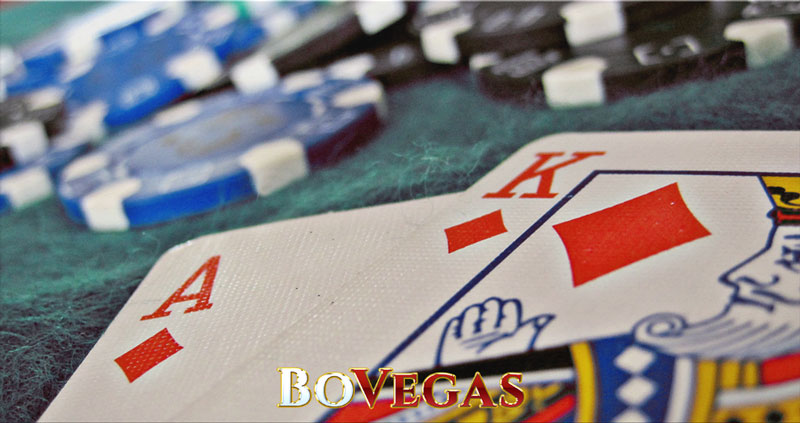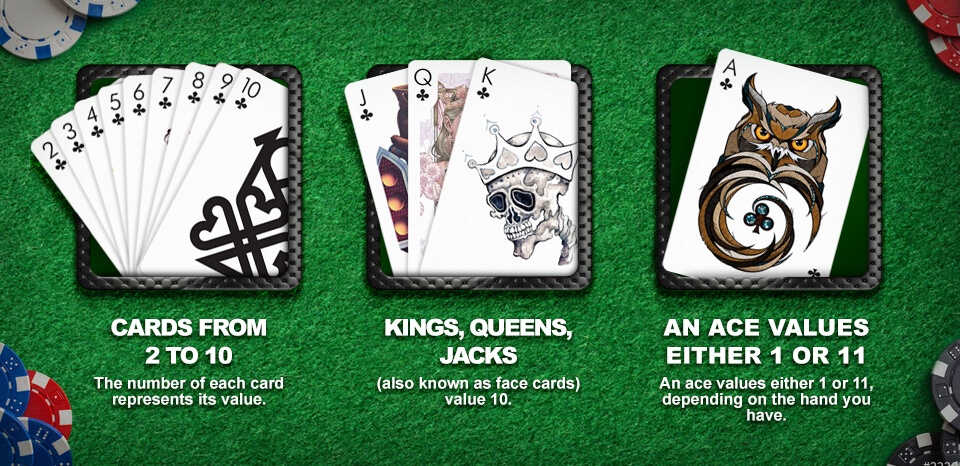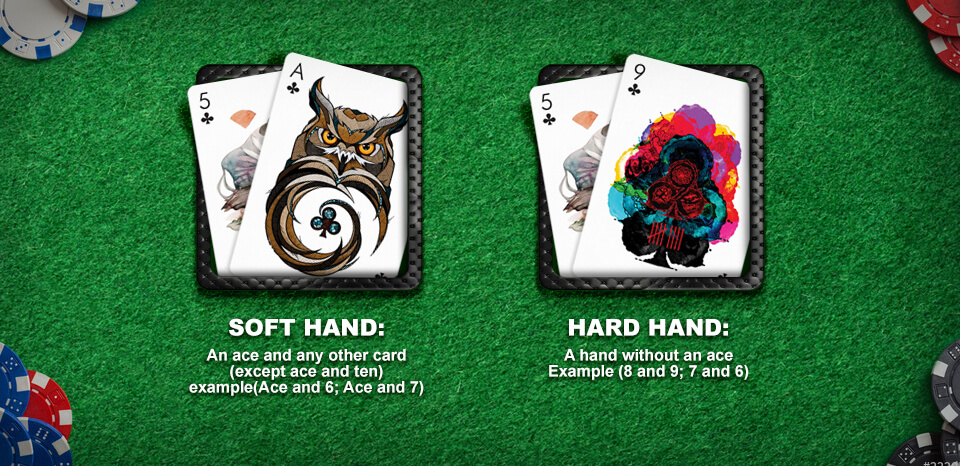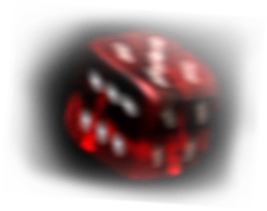



Do you want to make your trips to the local casino more profitable? Then you should think about learning blackjack and playing for real money. However, you need to learn all about the ins and outs of this popular card game first. When reading a blackjack guide card players won’t face any difficulties, however, it is essential to understand the basic factors of this card game before doing that.
Unlike slots and most other casino games, blackjack is generally considered to be a game requiring some serious intellectual skills; and in particular, mathematical ones! The art of counting and memorizing cards increases your chances of getting an edge over the house. Surprisingly, many newcomers and even some experienced players do neglect this simple (though necessary) rule.
Still, this doesn’t really mean that if you’ve never been into math, you only have a slim chance of ever becoming one of those experienced gamblers who play blackjack for real money. Because after all, you can always use your savvy, or simply rely on luck. Although, these are not the best options for you at all!
But no matter what you decide to do, it’s vital to understand the basic rules of the game once you’ve finally decided to play blackjack for real money. Otherwise, you’re pretty unlikely to have any success at the blackjack table, let alone getting anywhere near the Blackjack Hall of Fame.
The origin of blackjack is unclear, and the question of who invented this table game still remains a mystery. The first reference to the game appears in the book “Rinconete y Cortadillo,” by the Spanish author Miguel de Cervantes. In this text, he refers to blackjack as “twenty-one.”
Nowadays, this is considered to be the game’s second name. However, the rules of this card game haven’t changed much since then; because today, just like back in the days of Cervantes, the objective is to get as close to 21 as you can, but without going over that number!
The basic concept of the game is frequently misunderstood, however. Everyone is quick to fasten on the rule that, if you go over 21, you automatically lose! However, what confuses most people is the fact that chasing after the specific cards that are going to give you a total of 21 is often not the most effective blackjack strategy. Therefore, in the following sections, we’re going to discuss in detail some rather more useful strategies, tips and tricks!
But for now, let’s get back to the origins of the game. No known sources revealing the true origin of twenty-one. However, its contemporary version, i.e. blackjack, began in the United States. When the game was first introduced to the US market, the casinos slightly altered the rules; with the aim of luring perspective players to play blackjack for real money.
The gameplay largely stayed the same; but one of the major changes was the new ten-to-one payout. This was paid out when the player’s hand consisted of the Ace of Spades and a “black Jack” (either the Jack of Clubs or the Jack of Spades).
The hand itself was called blackjack, so the name of this updated version of twenty-one is correct! Admittedly, this special hand was soon to be abolished; yet ever since the early days of blackjack, the new name has stuck.
One of the widely encountered misconceptions among novice Blackjack players and gamblers who have never played this card game is that Blackjack is a game of fun and relaxation. Now, we’re not saying Blackjack can’t be fun; far from it! However, you can’t play it absentmindedly in the way you might play the slots, for instance.
Playing Blackjack for real money requires intense concentration and a serious attitude. Whenever you start playing at the blackjack table, you can actually feel the tension in the air for the entire duration of the game. In fact, even the game’s rules are devised in such a way that the players are obliged to remain silent during each round, while all the actions are made with gestures alone, rather than with words. Indeed, the only verbal cue you need to make is when you’re surrendering the match!
Although blackjack does appear to be a pretty straightforward game at first glance, there are quite a few variables that still influence the decisions of the players. So if you want to make the optimal play every single time, you’ll need to memorize when to hit, stand, double-down, and surrender. But first, you need to get a firm grasp of the core concepts of the game!
By now, we’ve already covered the fundamental principles — the main objective is to get as close to 21 as possible with a combination of two or more cards. Additionally, going over 21 signifies an automatic loss. So to pick up where we left off, it’s vital for us all to understand that the game is played exclusively against the dealer. So even though blackjack tables at land-based casinos are capable of accommodating anywhere from 2–7 players, everyone is still playing against the dealer!
Before you can sit down and play blackjack for real money, it’s important to understand the value of each individual card, as well as how the winner is determined. Here’s a visual representation of the different card values you can find in blackjack:

Depending on which variation of blackjack you opt for, the shoe (a box out of which the dealer takes cards) may contain anything from 1 to 8 decks. Each deck has 52 playing cards, with values ranging from 2 to 11.
Studies have shown that the more cards there are in the shoe, the bigger the advantage the house (casino) has. So in such a case, you have a far lower chance of getting the biggest blackjack win in history.
The game starts with the dealer dealing two cards to each player, as well as to themselves. The players’ cards are visible, while only one of the dealer’s two cards is face up. This is the key aspect of the game you need to focus on — the players need to make a decision despite only having access to 50% of the information necessary to make an informed choice!
To win the game, you need to have a higher total than the dealer. So based on your own two cards and the one you can see on the dealer’s side of the table, you can decide for yourself what your next move ought to be. You can opt to request another card; or split your hand (you can only do this in specific situations), or take a stand and hope to beat the dealer with what you have; or for some of the more ill-starred gamblers out there, surrender the game!
There are quite a few mathematical rules that can help ensure you’re making the best decision, and we’ll go over them in a minute. But the point here is to understand that, although you can ensure you’re betting on the highest odds, the question of which card comes up from the deck can’t be anything other than a completely random affair!
So that’s what ultimately makes blackjack a game of chance, rather than a game of skill. Still, by considering your own cards carefully, as well as the card the dealer has placed face-up, you should still be able to try and calculate what is your best move might be; well, statistically speaking, of course!
Blackjack beginners may find the game’s terminology slightly confusing, and perhaps even amusing at times. And the best example of this is the crucial distinction blackjack players make between soft and hard hands. Because after all, your blackjack guide is based on the hand you have; and this being so, it is actually really important for you to make your move intelligently. And the choice ahead of you partly depends on whether your hand is “soft” or “hard.”

Right after the cards are dealt, the tension of the game grows ever greater. From that moment on, the players have to study their cards carefully, as well as the dealer’s face up card, because all this is going to be of great assistance to them as they’re thinking about their next moves.
Now, as we’ve already said, the objective is to beat the dealer; and the easiest way to do this, surprisingly enough, is to get a blackjack!
A Blackjack Is a Combination of an Ace and a Ten Card.
As the statement above makes clear, it is only possible to hit a blackjack with the first two cards you have received. In such a case, your lucky pair is going to provide you with a win of 3:2 over your initial bet; and this means you’re going to receive some winnings that are one and a half times the original bet placed. All other scenarios are subject to the following moves:
Advice: the best soft hands to double down on range from 13 to 18 (e.g., A – 2 to A – 7).
Blackjack is a game for those who have strong nerves and who are ready to take a risk in order to beat the dealer. However, if the dealer’s face up Ace worries you, you can still take Insurance. Insurance is a bet that functions independently of your main wager, and it is aimed at recouping your possible loss.
If the dealer’s face up card is an Ace, there’s a high probability (around one-third) that they have a ten-valued hole card. In this case, you’re offered Insurance, which can be worth up to half of your bet, and which pays out 2:1. This basically provides you with a chance to redeem your initial bet and to finally break even.
If you want to play blackjack effectively, so you can actually win some real money, you must learn the basic blackjack strategy by heart. And we’re not going to sugarcoat this— there are actually quite a few “rules” you really do have to memorize. And it will likely take a while before you get to the point where you can make a split-second decision without consulting the charts.
Still, that’s the only way of maximizing your odds. You can’t just pull out a piece of paper and waste time trying to figure out what the optimal play is. If you did that, you’d just be delaying everyone — and of course, this is not allowed!
What you can and should do is to practice online while consulting the chart and the strategy in text form. This will help you build up a good memory and help prepare you for the ‘real thing’ in a land-based casino. So here’s the basic blackjack strategy for playing with 4 to 8 decks. If you use it properly, this little blackjack guide might just help you make the right move each and every time:
This strategy is the result of a computer simulation. The computer played hundreds of millions of blackjack hands and recorded the results. Then, it utilized an algorithm to accurately calculate the best possible play in each situation based on statistics. The “best” plays in each particular case are the ones that win against the dealer in the vast majority of situations.
Again, we can’t stress this enough: the outcome of each hand is completely random. So although you can always make the statistically best play, that’s still no guarantee you’ll win every time. However, if you’re consistently playing with 70% odds in your favor, you will, most likely, earn a decent profit in the long run.
As we’ve already mentioned, learning what to do in each particular situation isn’t exactly easy! It will likely take you quite some time before you can confidently make the best play in a heartbeat. So the best way to go about memorizing the basic blackjack strategy would be to play the game more.
Now, this endeavor doesn’t have to cost you an arm and a leg. In fact, you can practice applying this strategy completely risk-free. There are plenty of online websites where you can play blackjack for fun, using virtual currency rather than your own cash.
We understand that you’re probably feeling a huge rush of energy already, and you’re already really eager to apply your knowledge and cash in right about now! Even so, it’s still pretty vital not to be overeager. Think of it like you’re preparing for an exam. You’re not ready when you ‘feel” like you know “most” of the questions. Because although the chances are slim, if you end up having to answer the one you didn’t study for enough, you’re definitely going to crash and burn!
And of course, the same goes for the basic blackjack strategy too! Because if you’re not 100% confident what the right play is, making a wrong call at the blackjack table might just be the difference between going home broke and walking away from a casino with a significant profit!
So, you should only start wagering any real money when you’re confident you’re going to make the right decision, even if someone were to wake you up in the dead of night and deal the cards on the spot!
Of course, we’re not telling you this to discourage you. The fact is, there’s more to blackjack than meets the eye. Sure, you can start playing blackjack for real money right now and rely on pure luck! However, if you’re willing to invest time and energy into learning the basic strategy, you’ll win far more frequently. This is not an easy feat, but getting the hang of this is really going to pay off — quite literally!
Apart from the basic strategy we discussed above, we also want to share with you a few useful tips which can help you win at the blackjack table!
Insurance allows the player to make a side bet in the event that the dealer’s face up card is an Ace. Essentially, you’ll be placing money on the dealer having a blackjack. If that ends up being the case, you’ll win the side bet but lose the original one. So even in the best case scenario, you’re only going to break even!
The trick here is, the house has an advantage of about 6% if you take this bet. So if you opt for this play, you’re running the risk of losing even more money if you opt for this play! Instead, you need to accept the fact that you’re likely going to lose the round to a dealer Ace; and just move on. Remember that if you want to actually end up with any kind of profit, you don’t even need to win every single hand anyway! Because as long as you win more often than you lose, you’re still going to end up with more money in your pockets than when you first entered the casino.
Although it may sound a little strange at first, there’s a lot to be gained from sitting the furthest away from the dealer. And no, this doesn’t actually have anything to do with superstitions; nor are you at all likely to be getting any better hands, purely on the grounds of where you’re sitting at the table. Actually, the reason for choosing this seat is that in doing so, you can make sure you’re the player who has the most time to review your hand, as well as the dealer’s face up card. This actually gives you the best possible chance of making the right move!
Always remember that, in blackjack, you are actually playing against the dealer. So unless you’re actively counting your cards, the decisions other players make shouldn’t have any impact on your own choices. Also, please beware of listening to any self-proclaimed experts at the table, or even relying uncritically on your own “gut feeling.” So be prepared to work hard, and maybe, in the end, you will turn into one of the best blackjack players ever!

Celebrating Chinese New Year is nothing without a good blackjack game! The Asians believe that this helps predetermine the luck for the rest of the year. Blackjack is one of the best examples for diving into the cultural diversity of South Asia and to see what is so special about this game. Known as Ban-Luck […]
Leonardo DiCaprio bluffing against a Russian mobster. Looks like a movie scene? Wrong. It’s a common situation in Molly’s game room. Unfortunately, it no longer exists but what a life it was! Why do Hollywood movies happen IRL, why did a perfect plan fall apart and, most importantly, why should you never do things like […]
Online gambling has undoubtedly taken a place of true supremacy over the casino industry during the pandemic. And the reason for that is quite clear: online casinos are more accessible, and you can always count on some encouragement from the casino administration to help you boost your game. However, this digital revolution has only been […]
Every year, thousands of people are becoming gambling addicts, while thousands of addicts are already undergoing treatment to get rid of this problem. And even these numbers may be only the tip of the iceberg! If you understand that something went wrong, and you spend more and more time in a gambling venue, you can […]
If you love gambling and have been to a land-based casino at least once, you may have thought about becoming a dealer. Playing the same game but from the opposite side, while communicating with other players, sounds like a dream job, right? A dealer is a straightforward job, and you will be the heart and […]
On Monday September 14, MGM announced that it plans to open its first smoke-free casino at the end of September, when Park MGM will finally reopen its venues to players and tourists. The resort comprises around 2,990 rooms and various restaurants, and it’s set to be reopened on September 30. The venue has been closed […]
Online gambling has undoubtedly taken a place of true supremacy over the casino industry during the pandemic. And the reason for that is quite clear: online casinos are more accessible, and you can always count on some encouragement from the casino administration to help you boost your game. However, this digital revolution has only been […]
The large selection of online gambling sites out there can make players somewhat puzzled, and give them a feeling of uncertainty about making the right choice of casino. Each online gambling venue offers its own conditions, games, and various bonuses, of course; but the most important thing is the reliability of the casino and the […]